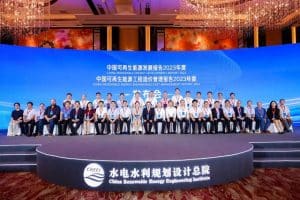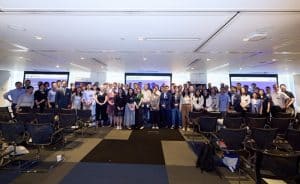CDB Staff Writer Li Simin examines Beijing’s uncertain policy environment for private migrant schools, and the role that NGOs continue to play in providing services to migrant children and families in these difficult times.
In Summer 2011, school closures [in Beijing] affecting migrant workers’ children once again pushed the issue of their education into the headlines. Suddenly, a number of related issues arose, ranging from the need to keep close watch on the whereabouts of children, to questioning the legality of the closures, to exposing the profit-seeking nature of private schools. Now, three months later, some children have entered the public school system, while others have returned to their hometown. The topic though is no longer in the headlines. NGOs that deal with migrant children education, on the other hand, are still dealing with the changes brought about by these decisions.
The Effect of Policy on NGO Work
What is Beijing’s policy on migrant children’s education? In the eyes of Lin Zhaoxing, the director of the New Citizen Schools, that policy has not yet taken shape.
He explained that currently, Guangzhou and Shanghai have adopted their own methods of handling the issue of migrant children education. Guangzhou’s solution is to completely embrace privately-run, locally organized schools, giving them favorable development opportunities. Over 400 such privately-run schools have opened. They are legally registered, and can basically take in all the migrant children in the city. Shanghai has taken another path, letting the government foot the bill. Currently, 160 migrant children schools receive full support from Shanghai’s Municipal Education Commission. They enjoy annual subsidies of 3000 RMB per student, plus start-up support of 500,000 RMB for each new school. Beijing’s policy hovers somewhere between Shanghai and Guangzhou’s approaches. It remains ambiguous, and varies greatly across Beijing’s urban districts and outlying counties.
This author discovered, in an online search for resources linked to the development of migrant children’s education, that in recent years the Beijing government has put forward several documents on this topic. In 2003, the State Council General Office released a document titled “Opinions on Furthering Compulsory Education Work for Migrant Children,” 《关于进一步做好进城务工就业农民子女义务教育工作的意见》 requesting that “various localities should draw on privately run schools in order to fill this role, and offer support and administrative assistance” The city of Beijing subsequently approved a few migrant children’s schools. But starting in 2006, it issued a “Beijing Municipal Education Commission Notice on Strengthening the Management of Private Schools for the Floating Population” 《北京市教育委员会关于加强流动人口自办学校管理工作的通知》, calling for a revamping of migrant children’s schools, with a proposal to “redistribute some, standardize some, and close some”. After this policy, some localities began large-scale closures of migrant children schools. Haidian District had declared as early as 2004 that in order for migrant children and Beijing children to enjoy the same quality of education, it would begin accepting migrant children. Under the premise that every child should be able to go to school, the district gradually began closing illegal migrant children’s schools and stopped issuing permits to open new ones.
However, just because the policy was put into place does not mean that conditions were ripe to implement it. Due to redistribution problems, this policy’s implementation has been compromised. As a result, the closed migrant children’s schools have reopened to accommodate those with no prospect of entering public schools.
Against this background, Lin Zhaoxing believes the main problem is an uncertain future, which hinders the development of NGOs with a focus on migrant children as they cannot make long term plans, and also bars entry for other NGOs. He raised the example of an NGO focused on education service work that after less than a year only has one school left after applying for three. How do they explain this to their funders?
In actuality, the reduction in schools has also caused the number of NGO service staff to contract.
Founded in April 2006, the Beijing Rural Children’s Cultural Development Center (北京农民之子文化发展中心) is a NGO that focuses on migrant children educators. It was founded by alumni who were part of a Beijing Normal University student club “Rural Children — China’s Rural Development Promotion Committee” (农民之子—中国农村发展促进会)。
Starting in 2007, Rural Children, Zhiquan School (智泉学校), and the China Zigen Rural Education Development Association (中国滋根乡村教育与发展促进会) jointly published The Candlelight Dispatch, a newsletter for teachers of migrant children. Wang Chunhua, project coordinator of Rural Children explained, the newsletter’s editorial team consists of migrant children educators, “with some teachers writing, some editing. Every meeting to discuss the paper becomes an opportunity for educators to meet each other. Everyone gets together and grabs a newsletter, and we chat about the current situation, as well as the situation in our particular schools and our feelings about it.”
Of the current policy shift, Wang Chunhua said, “The main effect on our program is that service staff are slowly being reduced, the number of schools is declining, as is the number of teachers.” The Dispatch‘s activities are still continuing and contacts are being maintained with teachers who went to work in the public schools. However, “despite the fact that their class time is shorter, these teachers need to adapt to new administration, new study habits, and multimedia classrooms. These changes put a great deal of pressure on teachers, requiring more time from them. They don’t have much time to participate in our activities.”
Above and Beyond the “Focus on Schools” Service Model
If the number of privately-run schools drops, does the space for NGO development necessarily shrink too? As it relates to migrant children educators, a group entirely at the mercy of their industry, this might be true. But looking at the wider issues of migrant children’s education, perhaps there are other paths.
Lu Lei, a staff member of [the well-known migrant labor NGO] Beijing Facilitators’ (北京协作者), stated that one of the special characteristics of NGOs is their flexibility. As their environment changes, the key is to find the best way to provide professional services. “On the topic of migrant children education, there is so much more to focus on than just the classroom. It should also include family and community education.”
Beijing Facilitators is a community support social work organization, founded on the belief that community is the core of social development. Taking root within communities, it aims to develop a participatory style of service, training the floating population to develop their own capabilities and promoting understanding and cooperation among different groups within the community.
Lu Lei explained that Beijing Facilitators categorize migrant children under the broad scope of educational services. If we look at people as members of a community, we need to think about more than just education. We can see that different people have been in the city for different periods of time, so the content of our services needs to be differentiated. It’s not just about relying on schools but focusing on the community. Some migrant children live in the city outskirts, and some live in residences throughout the city. Therefore, by choosing a community as the service point, one can cover a wider area. Even if schools are closed we must still make sure that services are being developed.
Beijing Facilitators uses the community as its base, and has developed public service summer camps in three communities. Using different topics, they develop topic-specific group activities, such as “Happiness in the Eyes of Migrant Children,” which has been run 42 times in total, directly serving 976 children. Moreover, they have also established community centers for children, developing after school activities and services. Under the leadership of social workers, young volunteers are organized to develop cultural, sports, arts, and academic activities, that have benefitted a total of 1505 migrant children and 120 migrant families. These activities have also benefited 360 people indirectly, by helping migrant workers who are too busy to look after their children. They also focus on developing harmony between parents and children, as well as between migrant children and Beijing native children.
Beijing Facilitators is also training children to be volunteers, and establishing a youth volunteer team. “Every time we start an event, the kids come early to help workers set up or post flyers. Throughout the entire event, they serve not only as beneficiaries, but also as helpers. ”
In his book Liquid Modernity, Polish sociologist Zygmunt Bauman’s uses “liquid modernity” as an analytical framework. As he sees it, globalization brings about “uncertainties in the affairs of the world, making it difficult to drive independence.” Contemporary society is as unstable as liquid, fluid and volatile. The motto of today’s labor force is adaptability and flexibility. “There are no jobs where things are set in stone, and the new catch phrase is ‘we’ll let you know when we get there,’ and so careers are filled with uncertainties.” Because of this, it is not just migrant laborers’ children who are facing educational problems; “new migrants,” urban white collar workers, are also seeing their children denied access to schools due to household registration issues. Mobility is high, household education is weak, and society is entering a difficult phase.
Education is inevitably an issue of government-provided public services. Most people support the idea that “public school education should be the mainstay, and so primary responsibility should be left to the government”. They consider public schools to be the government’s responsibility, and children have the right to an education. As a result, one can say that migrant children schools are a historical product of social transformation. When society changes, they’ll change as well, or even disappear. But NGOs won’t stop paying attention and addressing the problem of migrant education.



